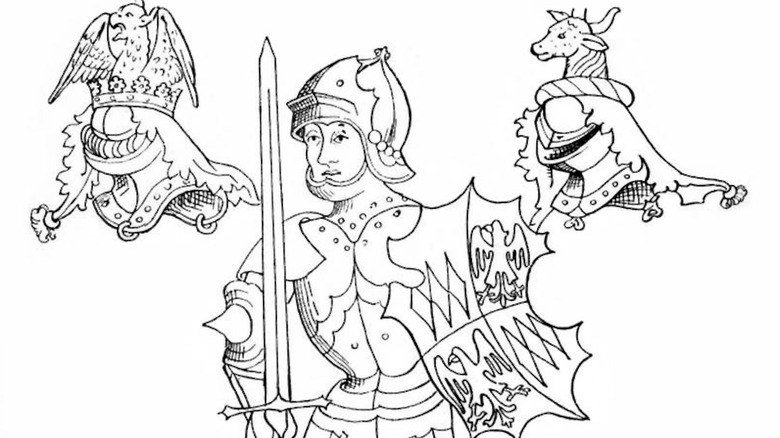The Bizarre Rumor About Royal George Plantagenet's Execution In The 15th Century
George Plantagenet, Duke of Clarence, was the brother of two kings and a major figure in the Wars of the Roses. Frequently changing sides, he met an early end because of his plots against his brother, King Edward IV. Legend has it that he was drowned in a barrel of malmsey wine, but is that really true?
George had a tumultuous early life. He was born on October 21, 1449, in Dublin, while his father, Richard Duke of York was in Ireland serving as the country's Lord Lieutenant. Richard was a cousin of the Lancastrian King Henry VI, but decided he wanted the throne for himself. This was a major factor in the Wars of the Roses. The Duke of York was defeated and killed at the Battle of Wakefield in 1460, along with one of George's older brothers. George and his younger brother Richard (the future King Richard III) were sent to Burgundy for their safety (via English Monarchs).
George's elder brother Edward kept fighting for the family's claim to the throne and defeated the Lancastrians in 1461, becoming King Edward IV. He made his brother the Duke of Clarence and George was also the heir to the throne until the birth of Edward's children. Like many others, he disliked Edward's wife Elizabeth Woodville, and her family.
George's plots with the Earl of Warwick
Richard Neville, Earl of Warwick, was Edward and George Plantagenet's cousin. Known as "the Kingmaker," he had helped Edward win the throne, but he disliked the king's wife and family — the Woodvilles — and as they became more prominent at court, Warwick became estranged from Edward (via English Monarchs). George married Warwick's daughter Isabel against King Edward's wishes. In 1470, George and Warwick led an uprising against the king, and even managed to capture him. They planned to make George king instead, but were unsuccessful and went into exile in France, according to History Hit.
The following year, Warwick changed his allegiance and fought to put the former King Henry VI back on the throne. He married his younger daughter to Henry's heir, so his family would be closer to the throne. George was disillusioned to find himself fighting for the Lancastrians, so he secretly made peace with his brother. He and his brothers defeated the Lancastrians once again and Edward was reinstated as king, according to Britannica.
George's wife Isabel died in 1476. Afterwards, George hoped to marry Mary, Duchess of Burgundy, but Edward vetoed that plan, so George began plotting again. George was convinced that Isabel had died by poisoning and had one of her ladies tried and executed for it, which he wasn't legally allowed to do (via History Hit).
George's downfall
George Plantagenet started spreading rumors that his brother King Edward IV was illegitimate, that his real father was an archer with whom their mother had an affair. He also claimed that Edward's marriage to Elizabeth Woodville was invalid. After another uprising, possibly led by George, Edward was fed up and finally had his brother arrested for treason. According to English Monarchs, George was executed a few months later on February 18, 1478. So how was he really killed?
The legend that he was drowned in a "butt" of malmsey wine (essentially 126 gallons) began to spread shortly after his execution. There's some evidence it could be true: When his probable remains were exhumed later on, he had clearly not been beheaded, which was the traditional method of execution for royalty at the time. According to History Hit, he may have been allowed to choose the method himself. Another possible clue comes from a portrait believed to be of George's daughter, Margaret Pole. In it, she's wearing a barrel charm on a bracelet — this could possibly be in memory of her father's death. According to Britannica, the execution was carried out secretly, so even at the time, few people would have known what happened. More than 500 years later, the truth remains a mystery.


